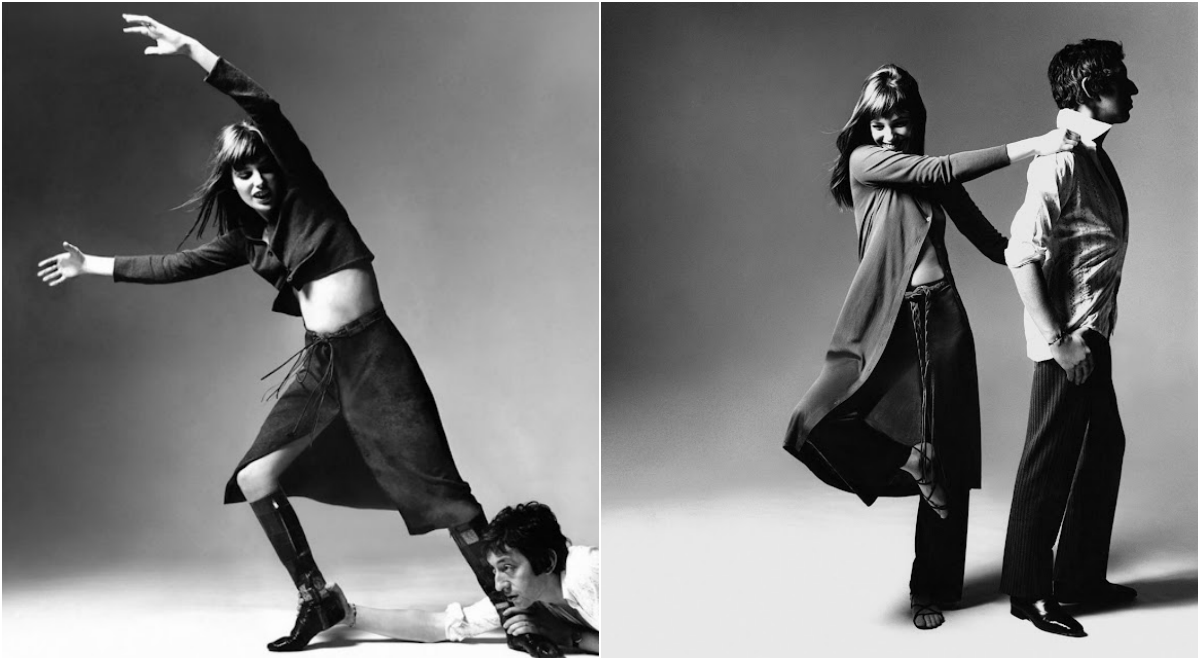Born 1912 into a wealthy Italian family and raised in Trieste, Count Ferdinando Sarmi expressed interest in fashion as a youth but was discouraged from pursuing a design career by his father. He stated in a 1965 interview with Time, “in Italy, when the oldest son tells his father he wants to be a dress designer, it’s like a woman saying she intends to be a prostitute.”
 |
| Fashion designs by Ferdinando Sarmi in the 1960s |
Sarmi’s father sent him to study at the University of Siena, where he received a doctor of law degree. Despite his professional training, he still desired a career in fashion. He became a costume designer and created costumes for two Italian films: Musica Proibita (released as Forbidden Music in the US) in 1942 and Cronaca di un Amore (released as Story of a Love Affair in the US) in 1950. Sarmi was given a leading role in Cronaca di un Amore, but it was his first and only on-screen performance. He left Italy in 1950 to work in New York fashion.
From 1951 to 1959, Sarmi was head designer for Elizabeth Arden. It was during this time that he developed a reputation as a top designer, wooing an influential clientele that included celebrities, New York socialites, and foreign dignitaries. He was best known for his opulent evening looks, and for his use of extravagant fabrics.
Sarmi left Arden and opened his own Seventh Avenue boutique in 1959. In 1960, he was awarded the prestigious Coty Award for fashion design. His collection included haute couture and ready-to-wear apparel that set the pace for 1960s fashion in New York. His designs commonly featured intricate embroideries, vivid colors, and racy hemlines.
During the late 1960s, the house fell upon financial difficulties. In 1972, his business was renamed Ferdinando Sarmi, but it closed shortly thereafter. By 1977, Sarmi had resettled in Italy, and he died in Verona in 1982. These amazing photos captured portraits of classic beauties wearing fashion designs by Ferdinando Sarmi in the 1960s.
 |
| Revlon Touch and Glow ad, gown by Sarmi, jewelry by Van Cleef & Arpels, 1960 |
 |
| Sondra Peterson wearing a hat of pink and red carnations by Sally Victor, gray wool suit by Sarmi, photo by Karen Radkai used for cover, Vogue, 1960 |
 |
| Isabella Albonico in pale pink suit of alpaca, wool and silk with huskier pink overblouse by Sarmi, jewelry by Van Cleef & Arpels, photo by Bert Stern, Vogue, February 15, 1961 |
 |
| Dorothea McGowan in tangerine velvet evening dress, the bodice embroidered in gold, the jacket cuffed in sable, by Sarmi, coiffure by Kenneth Batelle, photo by Bert Stern, Vogue, November 1, 1962 |
 |
| Model in soft, feminine princess coat with bias-cut skirt and long sweep down the back in blue wool plaid, by Sarmi, photo by Bruce Davidson, Vogue, March 1, 1962 |
 |
| "Black Evening Dress in Flight", gown by Sarmi, photo by Hiro, Harper's Bazaar, October 1963 |
 |
| Dorothea McGowan in silk chiffon painted by Tzaims Luksus, wrapped in taffeta stole, designed by Sarmi, photo by Gordon Parks, Vogue, February 1963 |
 |
| Model in green and yellow painted chiffon and Dorothea in strapless orange, yellow and pale green chiffon with pink taffeta shawl, all by Sarmi, photo by Gordon Parks, Vogue, February 1, 1963 |
 |
| Models in blue, mauve and green with cover-up top and pink, purple and pale blue with cocoon of taffeta, all by Sarmi, photo by Gordon Parks, Vogue, February 1, 1963 |
 |
| Tilly Tizzani in clouds of chiffon of pinks and yellows with panels fluttering out behind by Sarmi, photo by Hiro, Harper's Bazaar, March 1963 |
 |
| Dorothea McGowan in gown by Sarmi, Max Factor compacts advertisement, 1964 |
 |
| Wilhelmina in a one-piece dress with a small top of double red chiffon tied over a chiffon skirt in a heavenly shade of blue by Sarmi, jewelry from Tiffany, photo by Irving Penn, Vogue, March 1, 1964 |
 |
| Mirella Petteni in lace cage of apple green over a black silk shift by Sarmi, necklaces by Mimi di N, photo by Gordon Parks, Vogue, March 1, 1965 |
 |
| Marie-Lise Gres in a silk strapless evening dress and stole of citrus yellow and sea green by Sarmi, photo by Henry Clarke for Vogue, 1966 |
 |
| Veruschka in evening dress by Sarmi, photo by Irving Penn, Vogue, September 1, 1966 |
 |
| Isa Stoppi in black velvet jumper-pajamas with kimono sleeves, swimming with waves of silver Oriental flowers by Sarmi, earrings by Atelier Nina, photo by Neal Barr, Harper's Bazaar, October 1967 |
 |
| Silk organza dress in a warm brown sashed with a red belt by Sarmi, photo at the Villa Palagonia, Sicily, by Henry Clarke, Vogue US, 1967 |
 |
| Françoise Leroy in yellow, floaty silk georgette dress with crisp white organdie collar and cuffs and shiny white belt by Sarmi, photo by Henry Clarke, Mexico, Vogue, December 1, 1968 |
 |
| Paula Pritchett in evening dress of ribbon laced with cellophane showered with crystals, the hem clears the knee in front and to the floor in back by Sarmi, photo by Bert Stern, Vogue, March 1, 1968 |
 |
| Editha Dussler in raspberry-red organza dress framing the back in an oval of sparkling embroidery by Sarmi, coiffure by Kenneth, photo by Irving Penn, Vogue, February 1, 1969 |
 |
| Editha Dussler in ruffled silk georgette dress with speckled ostrich feathers around the wrists and swagging the skirt waist to hem by Sarmi, photo by Irving Penn, Vogue, February 1, 1969 |
Thank you for viewing the articles, please like and share to your family!












